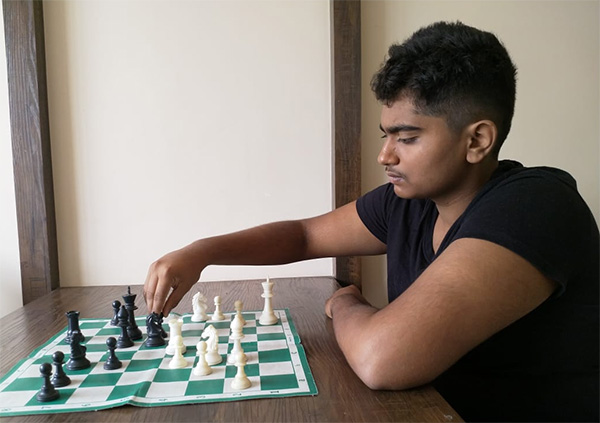


"...the really great make you feel that you too can become great." -Mark Twain
The week's pair of games come from Tanmay Srinath an Indian teenager who featured in the column just under a year ago.
 Now seventeen, Tanmay is a Taekwondo Black Belt, who has represented India at the highest level with distinction. becoming an international gold medalist. He recently came twelfth in science in national exams and will start undergraduate studies in August.
Now seventeen, Tanmay is a Taekwondo Black Belt, who has represented India at the highest level with distinction. becoming an international gold medalist. He recently came twelfth in science in national exams and will start undergraduate studies in August.
Working with BS Shivananda — a famous coach who has many nationally successful students under his guidance — Tanmay has been making progress in chess and is fiercely self-critical — an excellent attribute for a chess player. His favourite player remains Misha Tal and he prefers attacking chess but we start with the Agony, a difficult positional game in which he was pressing for the most part but made a bad misjudgement at the end.
Tanmay has provided lots of notes and as usual, I've added to these as 'JS'.
Click or tap the second game in the game list below the board to switch
Did you enjoy the column and instructive analysis by GM Jonathan Speelman? Do you wish you could have a world-renowned grandmaster analyzing your play? You can!
To submit your games just upload a PGN or ChessBase file, along with your name and e-mail address. Send one success story (Ecstasy) and one loss (Agony).
Tell why you chose them, where or when they were played. Please also include your email address, so Jon can reply, and preferably a photo of yourself for our article.
If your game is selected Jon will contact you personally, and not only will you get free detailed commentary of your games by one of chess’s great authors and instructors, and former world no. 4 player, but you also win a free three-month ChessBase Premium Account!
A three-month Premium subscription to ChessBase Account means you get: